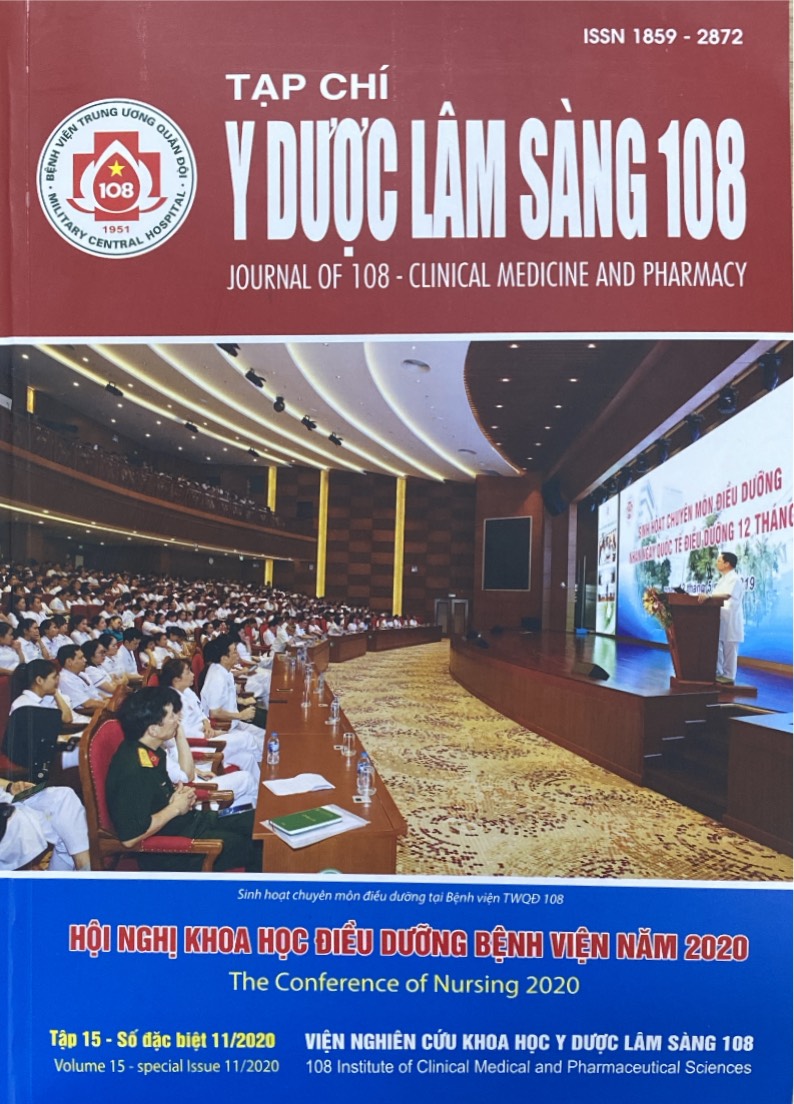The real situation of safe injection at the Institute of Clinical Infectious Diseases, 108 Military Central Hospital in 2018
Main Article Content
Keywords
Abstract
Objective: To investigate the real situation of safe injection and finding out some factors affecting the real situation of safe injection at the Institute of Clinical Infectious Diseases, 108 Military Central Hospital in 2018. Subject and method: A descriptive, cross-sectional study was conducted on 40 nurses and 308 observed injectionsat the Institute of Clinical Infectious Diseases, in 108 Military Central Hospital in 2018. Result and conclusion: The proportion of correct answers to knowledge about safe injections with a high prevalence (97.5%). The risk behaviors such as hand hygiene and wearing personal protective equipments before injection (75%); used gloves during injection and intravenous infusion (90%); correct techniques of breaking ampoules (77.5%) and correct storing needles for taking medicine on multi-dose vials (75%); correct disinfection of injection areas (42.5%); sorting and handling of syringes after injection (50%); fulfill 5 corectly injection criterias (86%); instructing and returning the patient to the proper position after injection (65.9%); correct sorting of waste after injection (96.1%); hand hygiene after injection (79.2%). Qualifications and number of years of working did not affect the safe injection practice.
Article Details
References
2. Phượng, T.T.M (2012) Thực trạng kiến thức, thực hành Tiêm an toàn và các yếu tố liên quan tại bệnh viện đa khoa Hà Đông, Hà Nội năm 2012. Trường Đại học Y tế công cộng Hà Nội.
3. Hassan H, Das S, Se H, Damika K, Letchimi S, Mat S, Packiavathy R & Zulkifli S (2008) A study on nurses’ perception on the medication error at one of the hospitals in East Malaysia. La clinica terapeutica 160(6): 477-479.
4. Hutin YJ, Hauri, AM & Armstrong GL (2003) Use of injections in healthcare settings worldwide, 2000: Literature review and regional estimates. Bmj 327(7423): 1075.
5. Janjua N (2003) Injection practices and sharp waste disposal by general practitioners of Murree. Pakistan. Journal-Pakistan Medicak Association 53(3): 104-110.
6. Khan AJ, Luby SP, Fikree F, Karim A, Obaid D, Dellawala S, Mirza S, Malik T, Fisher-Hoch S & McCormick JB (2000) Unsafe injections and the transmission of hepatitics B and C in a periurban community in Plakistan. Bulletin of the World Health Organization 78(8): 956-963.
7. Adejumo POD, FA (2013) Comparative study on knowledge, attitude, and practice of injection safety among nurses in two hospitals in Ibadan, Nigeria. International Journal of Infection Control 9(1).
8. Yan Y, ZhangG, Chen Y, Zhang A, Guan Y & AH (2006) Study on the injection practices og health facilities in Jingzhou district, Hubei, China. Indian journal of medical sciences 60(10): 407.
 ISSN: 1859 - 2872
ISSN: 1859 - 2872
